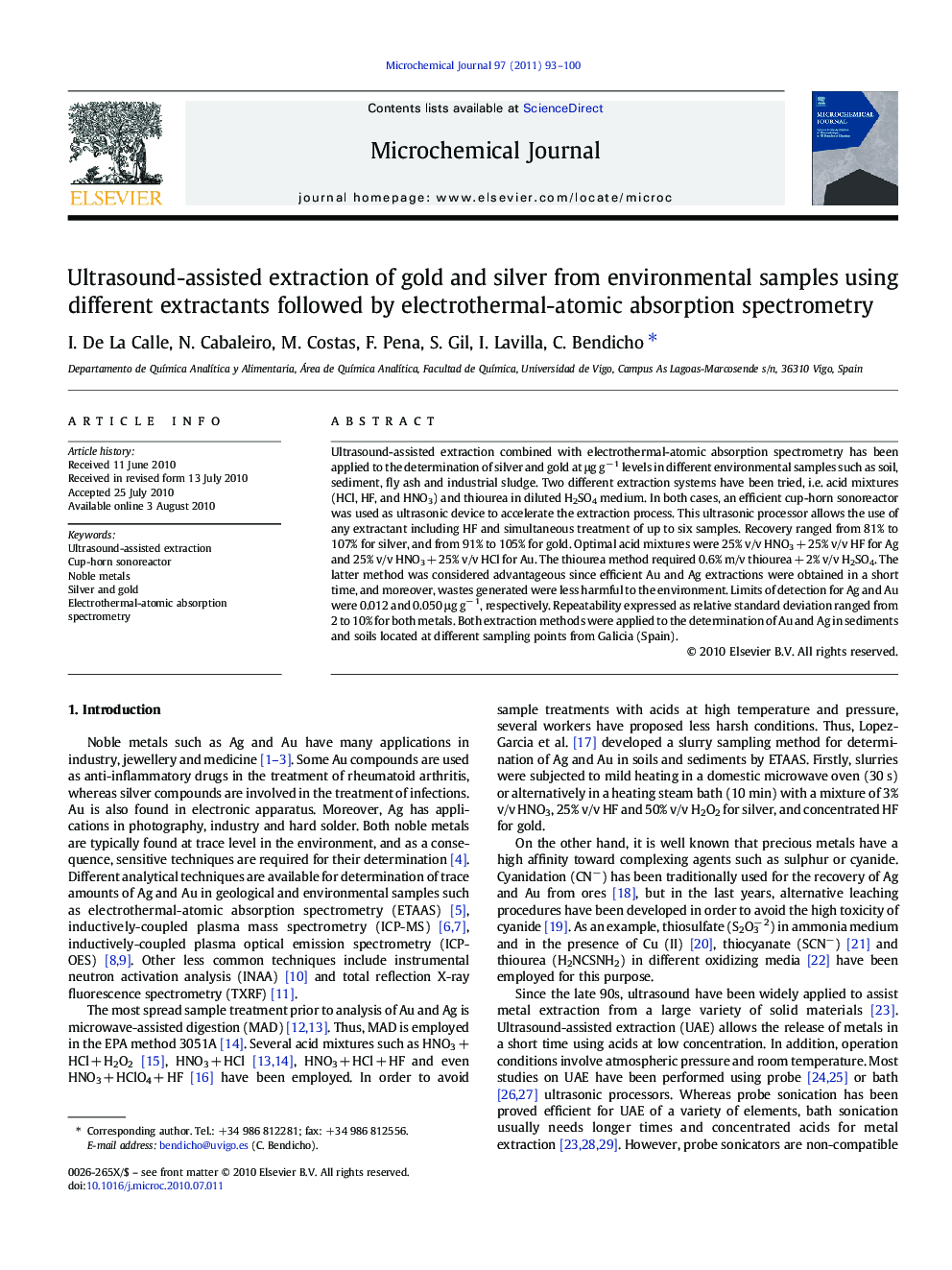| Article ID | Journal | Published Year | Pages | File Type |
|---|---|---|---|---|
| 1228119 | Microchemical Journal | 2011 | 8 Pages |
Ultrasound-assisted extraction combined with electrothermal-atomic absorption spectrometry has been applied to the determination of silver and gold at μg g− 1 levels in different environmental samples such as soil, sediment, fly ash and industrial sludge. Two different extraction systems have been tried, i.e. acid mixtures (HCl, HF, and HNO3) and thiourea in diluted H2SO4 medium. In both cases, an efficient cup-horn sonoreactor was used as ultrasonic device to accelerate the extraction process. This ultrasonic processor allows the use of any extractant including HF and simultaneous treatment of up to six samples. Recovery ranged from 81% to 107% for silver, and from 91% to 105% for gold. Optimal acid mixtures were 25% v/v HNO3 + 25% v/v HF for Ag and 25% v/v HNO3 + 25% v/v HCl for Au. The thiourea method required 0.6% m/v thiourea + 2% v/v H2SO4. The latter method was considered advantageous since efficient Au and Ag extractions were obtained in a short time, and moreover, wastes generated were less harmful to the environment. Limits of detection for Ag and Au were 0.012 and 0.050 μg g− 1, respectively. Repeatability expressed as relative standard deviation ranged from 2 to 10% for both metals. Both extraction methods were applied to the determination of Au and Ag in sediments and soils located at different sampling points from Galicia (Spain).
